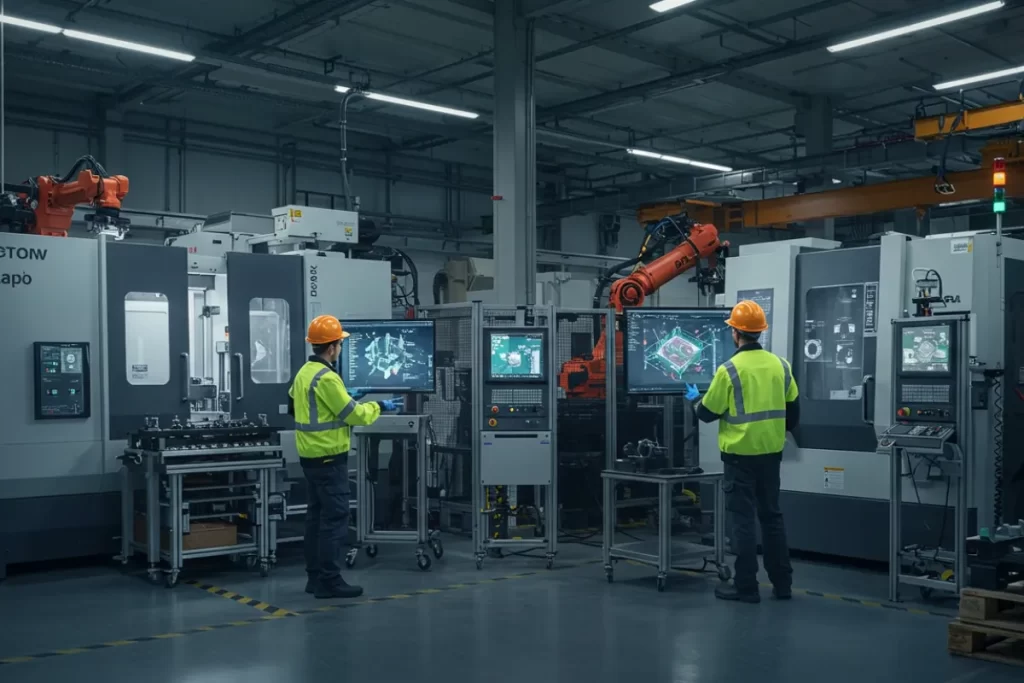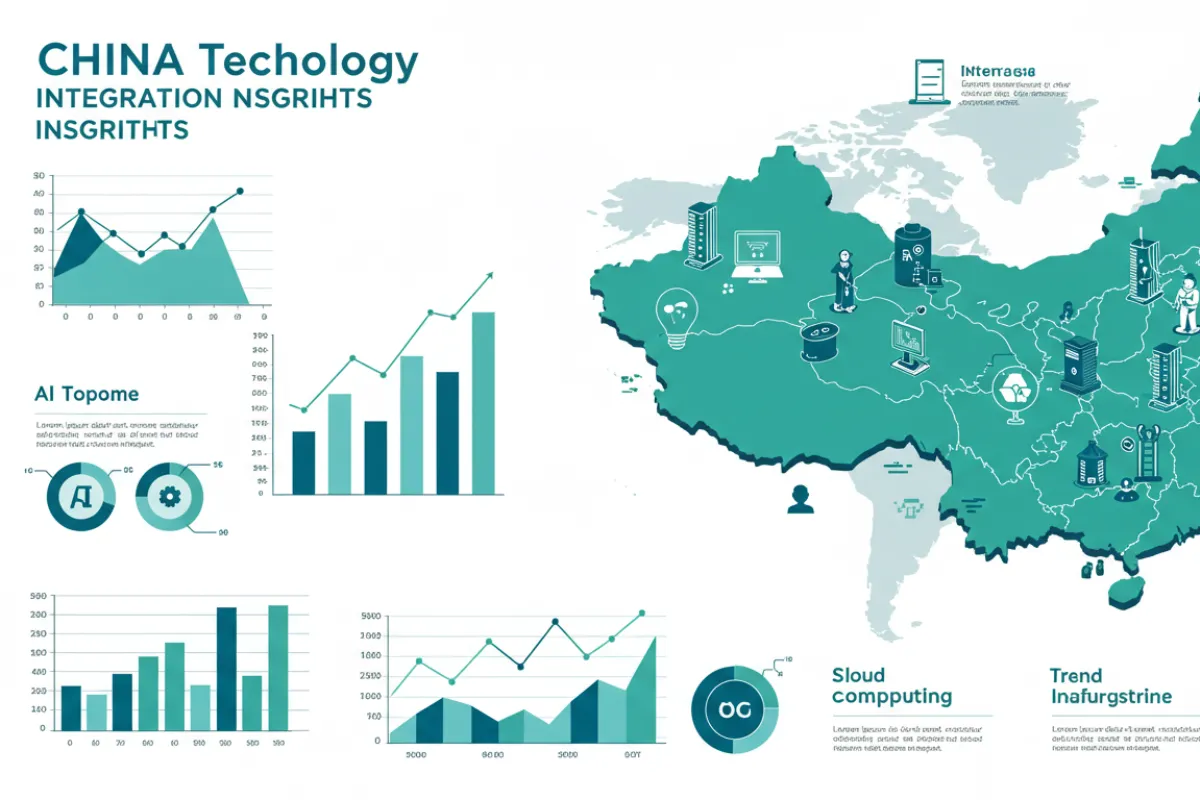Table of Contents
china technology integration insights? China has made huge progress in using technology in many areas, like education and industry. China’s ambitious 2025 plan aims to lead globally in technology. It focuses on science, innovation, and digital transformation. This article looks at how China is using technology in various fields. These efforts are shaping the country’s future. We will also look at how China’s tech compares to global powers like the United States. Then, we’ll explore how the country plans to become a technology leader.
China Technology Integration Insights: Understanding China’s Vision for Technology Integration
Technology integration in China is not just about using new tools. It’s about embedding technology deeply into every aspect of society and the economy. China’s national approach to technology integration centers on innovation. Key areas include semiconductors, biotechnology, and digital infrastructure. These are vital for achieving the country’s China 2025 goals. This vision aims to cut China’s dependence on foreign technology. Instead, it wants to use local innovation to boost national growth.
China’s national strategy supports its wider economic goals. These goals focus on technological progress and a move towards sustainable, advanced industries. These industries will enhance daily life for people and boost China’s tech influence worldwide.
Technology Integration in Education

One of the most important areas of technology integration in China is education. The nation is rapidly transforming its education system to meet the demands of the digital age. China has used modern digital tools. These include online learning platforms, virtual classrooms, and mobile apps. This makes learning easier and more engaging for everyone. This change aims to improve education quality. It helps students do better and prepares them for the future.
Incorporating technology into the classroom can improve critical thinking, problem-solving, and creativity. These are essential skills that help students compete in an increasingly globalized world. Teachers are changing their methods to use these tools well. This makes learning more engaging and focused on students.
AI and AR help with subjects like science and maths. They make complex topics easier to grasp. China focuses on science and technology in education. This shows the need for a skilled workforce. This workforce can help boost the country’s technological growth.
Innovation in Key Sectors: Semiconductors and Biotechnology

China is pushing hard for technological self-sufficiency. This is clear in its focus on innovations in semiconductors and biotechnology. These two sectors are crucial for China’s national security and economic independence. For years, China has been reliant on foreign countries for advanced semiconductor technology. However, with initiatives like Made in China 2025, the country is pushing hard to close the gap.
In semiconductors, China has already invested significantly in research and development. The Chinese government is teaming up with tech companies and universities. They aim to boost semiconductor skills and cut reliance on the US and Taiwan, which are the top producers. China is making progress in building its chip manufacturing. This aims to create a more self-reliant tech industry, even if the pace is slow.
Similarly, in the field of biotechnology, China has demonstrated impressive innovation. The country is using technologies such as CRISPR gene editing. This helps address both medical and agricultural problems. These advancements help China improve public health, enhance food security, and lead in global biotech innovations.
China’s leadership in biotechnology is not limited to healthcare. The Chinese national government wants to integrate biotech into various industries, especially agriculture. This aims to boost crop yields and address food security challenges. China’s innovation in this area is key to its broader strategy. This approach supports the country in creating a future of sustainable growth.
Technology in Industry and Manufacturing

China’s industrial technology sector is another key area where the country has successfully integrated digital technologies. The mix of IoT, automation, and robotics has transformed factories in China. Now, they are efficient production hubs. Smart factories can produce high-quality products for less money. This helps China become a key player in global supply chains.
In addition to manufacturing, technology transfer has been a crucial part of China’s industrial growth. China has boosted its role as a global manufacturing leader. They did this by acquiring foreign technologies and adapting them for local use. Chinese companies are making more technology products for the local market and exports.
China is working to combine digital technologies with industries. They are focusing on developing smart cities. These cities use sensors, AI, and IoT devices. They improve public services like transportation, energy management, and environmental monitoring. China is using these technologies, making its cities examples of modernity and efficiency.
China’s Competitive Edge in Global Technology
China’s focus on technology integration is about more than national development. It’s also about making the country a global technology leader. The country is responding directly to the global tech race. The US and China are both vying for control in AI, semiconductor production, and biotech. China is keen to close the tech gap with Western countries. Its leaders are focused on creating a strong, self-sustaining tech ecosystem.
China is growing into a tech giant. This is due to government support, smart planning, and a strong network of private businesses. The government is dedicated to funding research and development (R&D). It works with organizations like the Ministry of Science and Technology. This support has brought big advances in areas like artificial intelligence, 5G tech, and quantum computing.
The country focuses on advanced industry and technology. This is clear in the rising role of tech companies. Companies like Huawei, Alibaba, and Tencent are shaking up global markets. They are helping China become a strong player in technology worldwide. Click Here For More Information About Technology.
The Role of Technology Transfer and Security

china technology integration insights? One of the central themes in China’s technological strategy is the importance of technology transfer. As the country develops its tech skills, it is also eager to buy advanced technologies from other countries. The US and China have tensions about intellectual property and technology transfer. China faces accusations of failing to protect intellectual property rights. There are also worries about security and new technology being misused.
China has shown it can innovate and advance in many high-tech fields despite these worries. The country is working to secure its tech supply chains. It wants to build a sustainable and self-sufficient tech ecosystem. This shows its commitment to relying less on foreign technologies.
Also Read: Impact of Litigation on Business Operations & Legal Disputes
Final Thoughts: A Tech-Powered Future for China
china technology integration insights? China’s approach to technology integration is ambitious and comprehensive. The country is making major progress in many fields. It aims to be a global leader in science and technology by 2025. This includes areas like education, biotechnology, semiconductors, and manufacturing. China’s achievements show its strong focus on innovation, self-reliance, and global competitiveness.
As China’s technology sector grows, its influence will extend far beyond its borders. China is using new technologies to shape its future. Digital transformation is key for economic growth. It boosts public welfare and improves global standing.
China’s path to tech leadership shows important lessons. It shows the challenges and chances for countries that want to adopt new technologies and stay competitive in the global tech race. It’s unclear if China will fully achieve its China 2025 vision. One thing is clear: the country’s drive for tech progress will shape global innovation for years to come.


